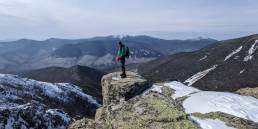At almost 800,000 acres in size, containing approximately 1,200 miles of hiking trails, and topping out at 6,288 feet—higher than anywhere else in the Northeast—the White Mountain National Forest offers nearly limitless possibilities for human-powered exploration. Hiking options in the White Mountains expand with the inclusion of adjacent state parks like Franconia Notch and Crawford Notch (which includes the nation’s oldest continuously maintained hiking trail—the Crawford Path).
The proximity of the White Mountains to many of the Northeast’s biggest cities makes them an attractive option for the region’s hikers, but one barrier remains for some who want to explore this dreamy destination: where to start?
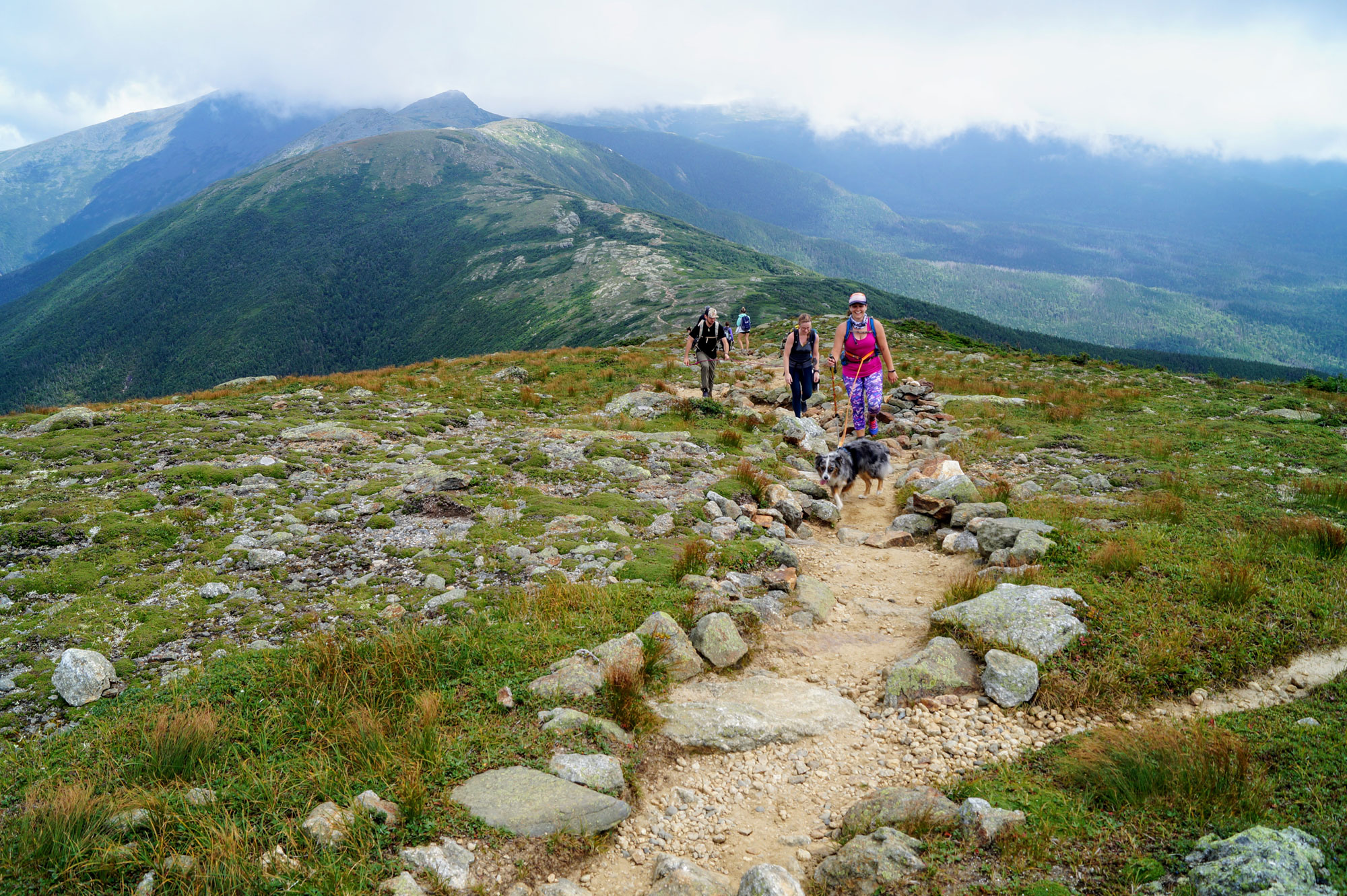
Start Small to Go Big
Epic hikes like the Presidential Traverse, Pemi Loop, and Franconia Ridge are at the top of seemingly every hiker’s White Mountain bucket list, but they aren’t the best trips for hiking novices. Start small, build fitness, get familiar with the weather and terrain of the Whites, and start figuring out what gear works for you.
Some great 1-3 hour hikes for getting your feet wet include:
- Artist’s Bluff
- Champney Falls
- Mount Major
- Lonesome Lake
- Black Cap
For a little more of a challenge, consider these moderate hikes:
- Middle and North Sugarloaf
- Welch-Dickey
- Mount Willard
- Hedgehog Mountain
- Mount Pemigewasset
Ready to start ticking off 4,000 footers? Here are a few of the easier ones:
- Mount Hale via Hale Brook
- Mount Tecumseh via Tecumseh Trail
- Mount Waumbek via Starr King Trail
- Mount Pierce via the Crawford Path
- Cannon Mountain via High Cannon
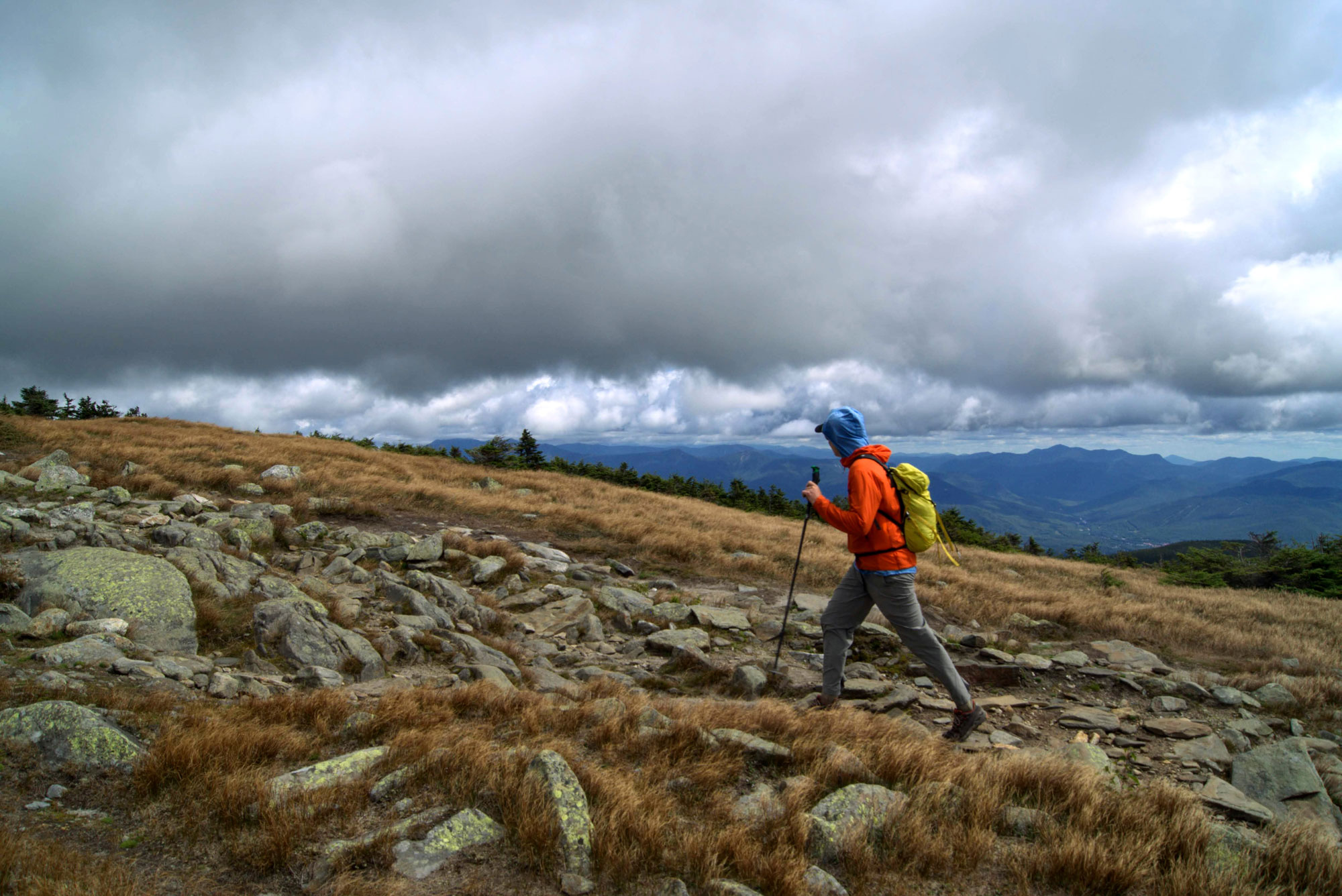
Carry Essential Items
The “10 essentials” serve as a basic guideline of what you should carry in the event of an emergency or an unexpected night outside. The concept originated in climbing classes taught by the Mountaineers—an outdoor recreation organization founded in the Pacific Northwest—in the 1930s. However, it wasn’t until 1974 that the 10 essentials actually made it to print, when the long-standing tome of American climbing, Mountaineering: The Freedom of the Hills included the list in its third edition.
In the near-century since their development, the 10 essentials have evolved to encompass modern technology but still fulfill their original intention. The 10 essentials are:
- Navigation: Study your route before you leave home, then bring a map and compass, GPS, or a smartphone with a navigation app like Gaia.
- Headlamp: Hikers are encouraged to carry a headlamp with extra batteries, but we live by the maxim that the best place to keep extra batteries for your headlamp is in another headlamp—after all, a powerful headlamp like the Black Diamond Spot only weighs three ounces.
- Sun protection: Sunglasses for your eyes and sun-protective clothes and sunscreen for everything else.
- First aid: Check out the goEast article How to Restock Your First-Aid Kit for ideas on what to carry.
- Repair kit: A small knife or multi-tool and some duct tape for making trailside repairs like fixing a broken zipper or tapping the sole of a shoe back on.
- Fire: Waterproof matches and a firestarter.
- Shelter: A lightweight bivy to hunker down in the event of an unexpected overnight or while awaiting rescue.
- Extra food: Our article Staying Fueled Up on Long Hikes outlines some basic nutritional principles for powering your adventure—as a rule of thumb, bring more than you need.
- Extra water: Water is heavy, but tablets or a lightweight mini-filter offer safe, easy ways to stay hydrated in an emergency.
- Extra layers: Everyone has different needs—some people run warm, some cold—but bring more layers than you think you need. Get an idea of what your hiking kit should look like in our article Top to Bottom: Gear to Hike the NH 48.
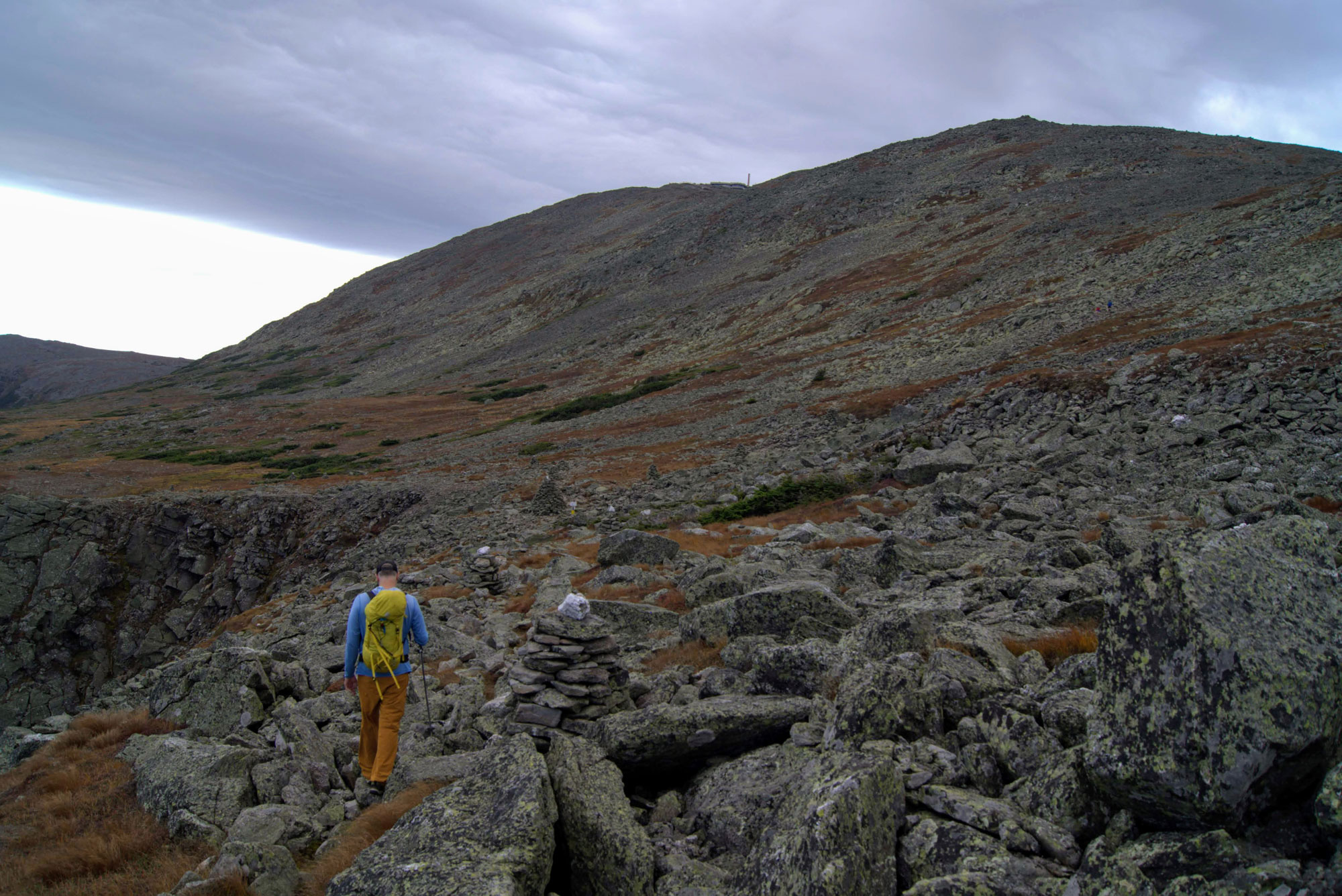
Mountain Weather
The weather in town is often a lot different from what you’ll find in the mountains. Strong, chilly winds are commonplace on hikes above treeline, as are intense sun and even the odd out-of-season snow. Rather than trusting the weather app on your phone, check out the higher summits forecast from the Mount Washington Observatory for a clear idea of what’s happening weather-wise in the Whites.
Trail Conditions
Weather isn’t the only difference between town and the mountains. For example, snow can linger in the woods for weeks after it has melted from sidewalks and backyards. Another thing to keep in mind before hitting the trail is water crossings, as spring snowmelt and heavy rains can turn small streams into raging rivers. The website NewEnglandTrailConditions.com is a handy resource for learning what conditions to expect on your hike.
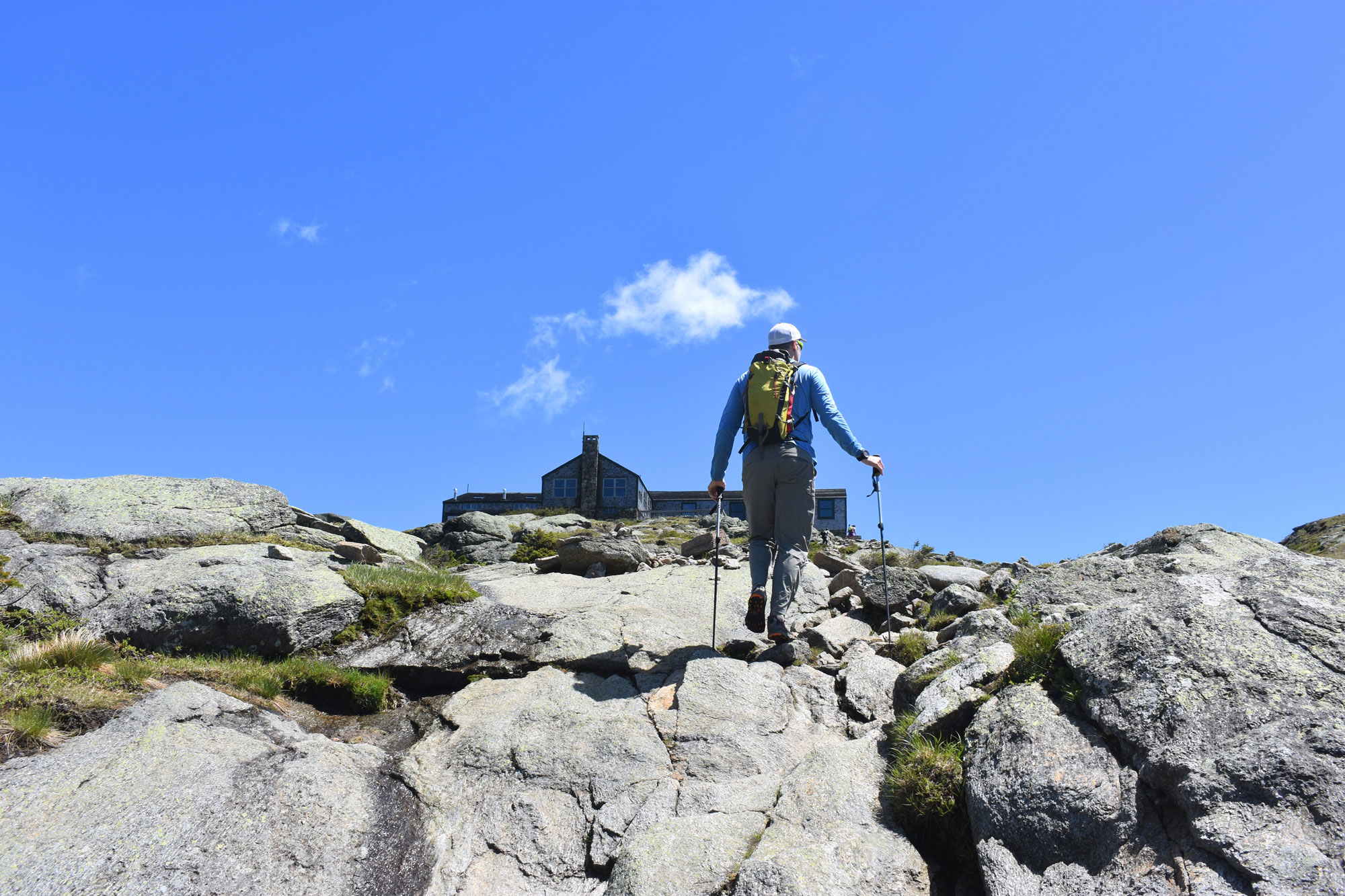
Find Some Friends
Joining a more experienced partner or two for your first few outings is a sure way to get all the benefits of the Whites without any of the stress. An experienced friend can provide critical beta—like directions to the trailhead or which way to turn at the unsigned trail junction—while also offering feedback on questions you have about appropriate gear and your fitness level.
Stay Safe
A good reason to hike within your abilities, carry the 10 essentials, and know what you’re getting yourself into is that the State of New Hampshire has recently started charging people for rescues if they’ve demonstrated negligent behavior. To insure yourself against a bill for a rescue, and to support NH Fish and Game search and rescue efforts, consider purchasing a Hike Safe Card for $25 a person or $35 for a family. Don’t think you’ll need a rescue? The NH Fish and Game on average participate in 190 search and rescue missions per year.
Have any tips for new hikers? If so, leave them in the comments below.
Tim Peck and Doug Martland
Tim and Doug met long ago at the Eastern Mountain Sports in Canton, Massachusetts. Bonding over a love of slick Quincy Quarry granite, White Mountain sufferfests, and scheming up adventures while folding tee-shirts, today Tim and Doug collaborate to write about their favorite outdoor activities and occasionally get nostalgic about tee-shirt tables.
Related Posts
April 12, 2024
Explore Like a Local: The Outdoor Mecca of North Conway, NH
There's a lot to love about this New…
April 3, 2024
5 Things To Do in the Boston Area During Mud Season
Adventure opportunities are abundant…




